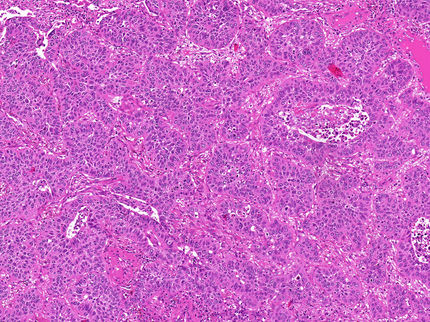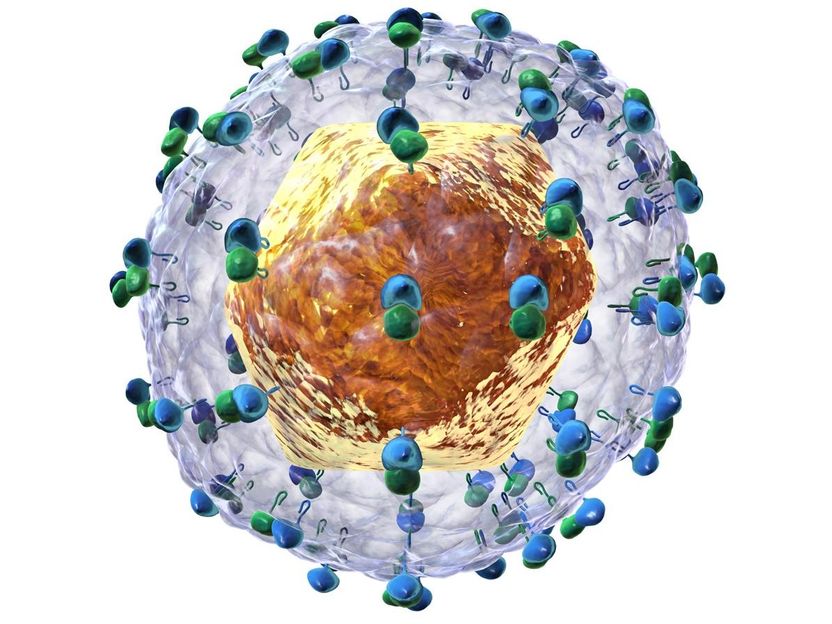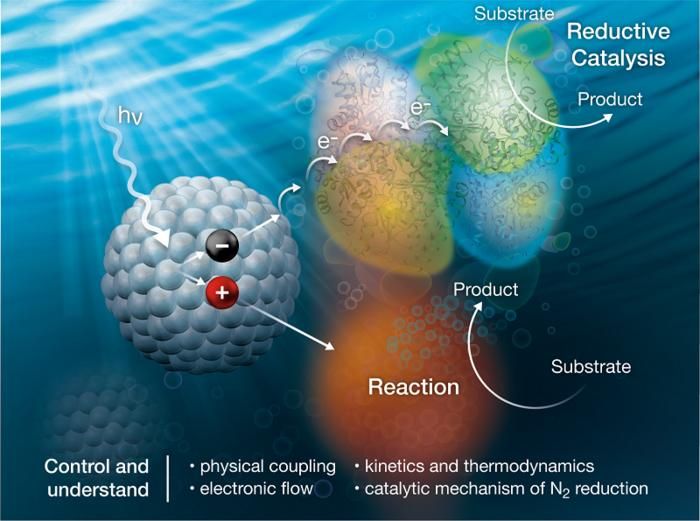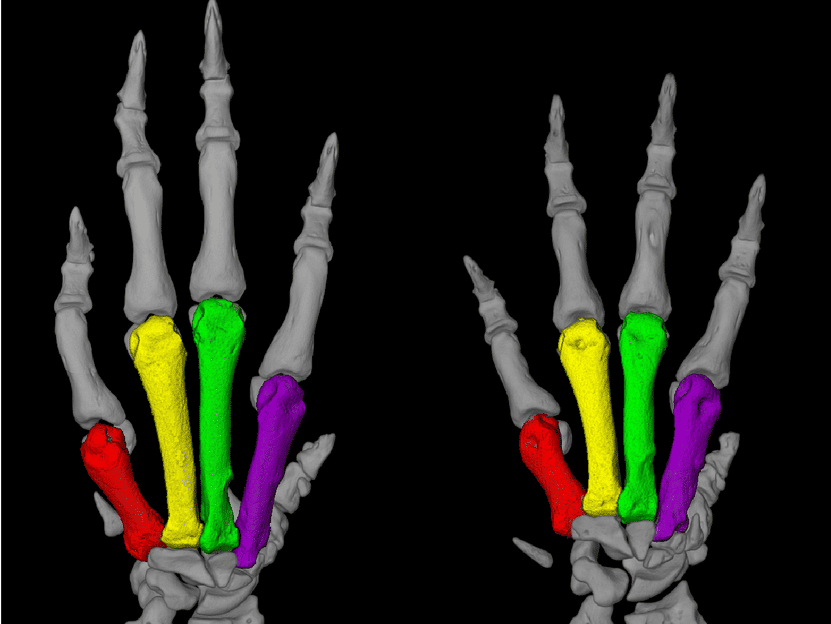Simple diagnostics for common diseases
With the help of a single infrared light measurement and machine learning, metabolic disorders and high blood pressure, among other things, can be detected
Some common diseases could be easier and quicker to diagnose in the future than they have been to date. A team from the Max Planck Institute of Quantum Optics, the Ludwig Maximilian University of Munich and the Helmholtz Zentrum München has demonstrated in a representative study that infrared light measurements on blood plasma and machine learning can be used to detect various metabolic disorders such as type 2 diabetes and high blood pressure. The method also detected prediabetes, a preliminary stage of diabetes that is often overlooked by other diagnostic methods. Previously, separate tests were required to detect the various diseases. As a single measurement is now sufficient for this, which also only requires a drop of blood and a few minutes, the method enables comprehensive health screenings of the population, for example for the early detection of diseases.

One sample, many diagnoses: the tube contains little more than a drop of blood plasma. Infrared light can be used to diagnose various metabolic disorders such as type 2 diabetes, high blood pressure and metabolic syndrome.
© Thorsten Naeser
According to the Robert Koch Institute (RKI), around nine percent of adults in Germany are likely to suffer from diabetes, more specifically type 2 diabetes, which mainly occurs in people over 40. However, only a good seven percent have been diagnosed with the disease. This means that around 1.3 million people are unaware that they have diabetes, which significantly increases their risk of cardiovascular disease, among other things. Even more people in Germany are unaware that they suffer from high blood pressure and therefore have an increased risk of a heart attack. In 2014/15, according to a study by the RKI, a good 30 percent of adults, i.e. around 22 million people, knew that they had the condition. However, around five million people suffer from unrecognized high blood pressure. Routine screening of the population could therefore save millions of people from the consequences of diabetes or high blood pressure. "Thanks to our method, such population-wide screenings will be easier in the future," says Mihaela Žigman, who heads a research group at the Max Planck Institute of Quantum Optics and Ludwig Maximilian University and is responsible for the current study.
Žigman's team has developed a method to detect the biochemical changes in blood plasma associated with the various diseases by measuring them with an infrared light. This is because molecules that are typical for a disease - so-called biomarkers - change the infrared spectrum of the blood plasma in a characteristic way. This gives the researchers a molecular fingerprint of the diseases, with a single measurement for type 2 diabetes, high blood pressure, elevated blood lipid levels and prediabetes. In order to identify the changes in a person's state of health, the researchers trained a machine learning algorithm to recognize the corresponding infraort fingerprints. This also enables them to diagnose metabolic syndrome or its precursor. Metabolic syndrome comprises several changes in health status, of which a person must have at least three: High blood pressure, elevated blood lipid levels, a lowered HDL cholesterol level, an increased amount of abdominal fat and insulin resistance, which indicates developing diabetes. People with metabolic syndrome have an increased risk of developing cardiovascular disease and bowel or liver cancer.
Highly accurate diagnostics
In a study involving around 5200 blood samples from almost 3200 test subjects, the team from the Max Planck Institute of Quantum Optics, Ludwig-Maximilians-Universität and the Helmholtz Zentrum München has now investigated how reliably their method detects the various diseases. To this end, they analyzed the participants' blood plasma not only with infrared light, but also with the current standard diagnostics for each of the diseases. The study has been published in the journal Cell Reports Medicine. According to the study, type 2 diabetes and elevated blood lipid levels can be identified with around 95 percent accuracy using the infrared fingerprint. The method detected metabolic syndrome with almost 90 percent probability. For high blood pressure and prediabetes, the sensitivity is a good 75 percent. "For medical practice, the sensitivity/ratio should be above 75 percent if possible," says Mihaela Žigman.
The researchers analyzed two samples from over 2,000 participants in the study, which they had taken six to seven years apart. Of these, more than 200 developed metabolic syndrome between the two measurements. The researchers used this to train their algorithm to predict whether a person would develop metabolic syndrome in the next six and a half years based on a blood sample. The algorithm actually succeeded with a 77 percent hit rate.
An infrared fingerprint of health
From a medical point of view, another result of the current study is also relevant: "Our algorithm also recognizes whether a person does not have any of the diseases we examined, i.e. is healthy in this respect, based on a single infrared measurement," says Mihaela Žigman. "Many conventional diagnostic methods often have false results because the values that indicate a disease are often based on measurements of single molecules or single biomarkers." In an earlier study, a team led by Mihaela Žigman had already shown that lung, breast, prostate and bladder cancer can be detected just as accurately, but more easily and cost-effectively than with conventional diagnostics using their respective infrared fingerprints and machine learning.
In order for the method developed by the team from Garching and Munich to be used clinically, further studies by independent research groups are required. Secondly, an industrial partner must be found to develop a practical device and have it certified in accordance with the strict criteria for medical devices. "We are convinced that we can significantly simplify the diagnosis of many diseases with an infrared fingerprint," says Mihaela Žigman. "In medicine, there is great interest in simple diagnostics for comprehensive screenings. Now our method still needs to establish itself in the healthcare sector."
Note: This article has been translated using a computer system without human intervention. LUMITOS offers these automatic translations to present a wider range of current news. Since this article has been translated with automatic translation, it is possible that it contains errors in vocabulary, syntax or grammar. The original article in German can be found here.
Other news from the department science
Most read news
More news from our other portals
See the theme worlds for related content
Topic world Diagnostics
Diagnostics is at the heart of modern medicine and forms a crucial interface between research and patient care in the biotech and pharmaceutical industries. It not only enables early detection and monitoring of disease, but also plays a central role in individualized medicine by enabling targeted therapies based on an individual's genetic and molecular signature.

Topic world Diagnostics
Diagnostics is at the heart of modern medicine and forms a crucial interface between research and patient care in the biotech and pharmaceutical industries. It not only enables early detection and monitoring of disease, but also plays a central role in individualized medicine by enabling targeted therapies based on an individual's genetic and molecular signature.





























































